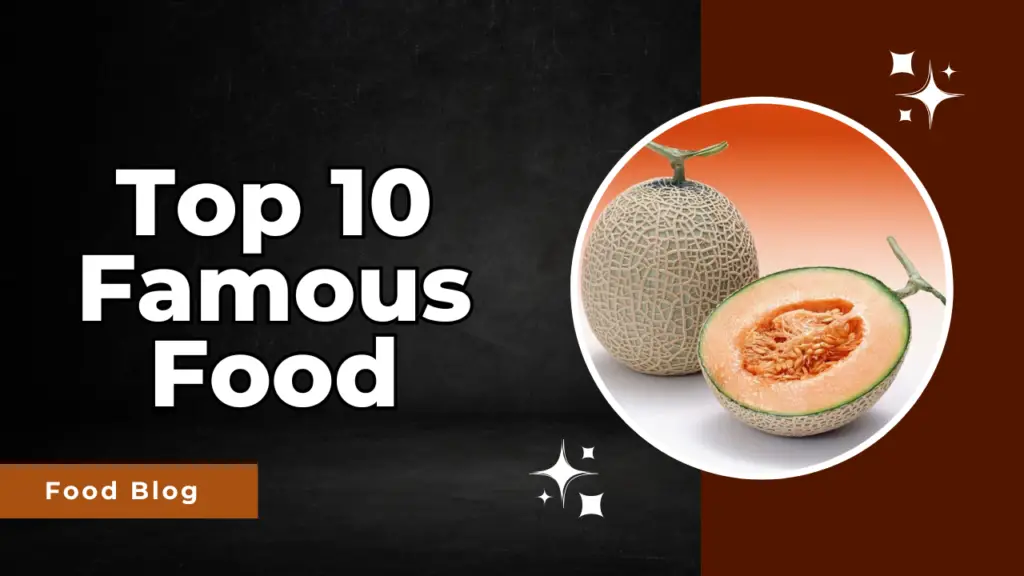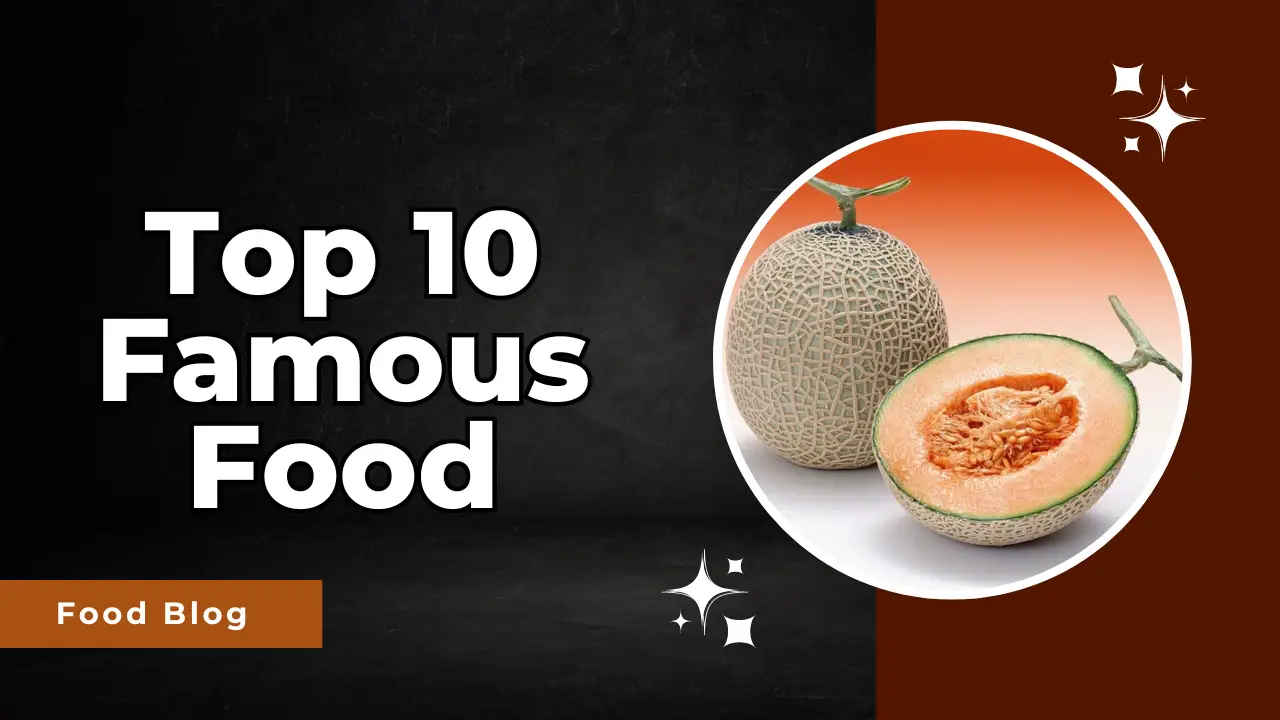
Introduction
We consume food daily to survive. However, there are certain foods that are both the most expensive and delicious. These foods are famous and top the list of costly delicacies. There are countries in the world where most citizens cannot afford to eat two meals a day, but now I will discuss foods worth thousands and even tens of thousands of dollars. Here are the top 10 most exquisite and expensive foods in the world.
Alba Truffle/White Truffle
What is it: The Tuber magnatum, or White Truffle (Italian: tartufo bianco d’Alba), is a species of truffle in the genus Tuber and the family Tuberaceae. It is found in Southern Europe, the Balkans, and Thailand.
Why it is famous: People pay a high price for truffles due to their distinctive fungal aroma and flavor. However, not all truffles are equal. Black truffles are more affordable because they have a longer season, can be frozen, and are more common compared to other varieties.
Varieties: There are many species, over 140 in fact, although only a few have significant market value. Cultivated varieties include: Black Périgord Truffle (Tuber melanosporum), Winter Truffle (Tuber brumale), and Alba White Truffle (Tuber magnatum). Alba White Truffles are mainly harvested in Northern Italy but can now also be found in other countries like France. They are the rarest and most sought-after truffles, explaining their high cost compared to other species.
Where it is found: The Tuber magnatum pico, or White Truffle, also known as the “Diamond of Alba,” is incredibly rare and prized. White truffles are found almost exclusively in the Langhe, Roero, and Monferrato areas of Northern Piedmont in Italy, and only from October to early December.
How it is produced: Harvested from October to December, the short winter season adds to the mystique of this fungus. Truffles grow a few inches below the earth in association with the roots of hardwood trees like oak, chestnut, hazelnut, and hornbeam. Truffles are a type of fungus that grows underground, usually near the roots of specific trees like oak, hazel, and beech. They form a symbiotic relationship with their host trees, exchanging nutrients and water in a mutually beneficial partnership.
Benefits of Alba Truffles: Truffles are rich in essential vitamins and minerals such as vitamin C, calcium, magnesium, and iron. They are also high in protein and fiber. Research shows that Truffles may even be a complete source of protein, providing all the necessary nutrients. Some studies suggest that a powerful truffle extract may help lower cholesterol, control blood sugar, and protect the liver from damage.
Why it is expensive:The high cost is due to the rarity of the product, the seasonal nature of truffles, the difficulty in growing them, and the long cultivation period. They also have a short shelf life. Truffles require a very specific climate and a large number of oak trees, which is why they are often found in forests.
Price : White truffles are the only truffles that have become extremely expensive (due to their rarity). The official truffle stock exchange lists them, and in the Italian market, their price ranges from €2,000.00 to €6,000.00 per kilogram, depending on how many truffles Mother Nature offers in a given season.
Albino Caviar
What it is: Our White Pearl, the valuable Albino caviar, is collected from the extremely rare Albino Sturgeon, which is farmed in pristine, unpolluted waters of Northern Europe. This top-quality Albino Sturgeon caviar ranges in color from soft to semi-firm and from white to bright gold, with bead sizes similar to Sevruga.
How it is famous: So rare and prestigious, White Albino Sturgeon caviar is one of the most expensive and rare foods in the world. Kolikof Caviar is proud to be one of the few exclusive operators offering this exotic and rare delicacy.
Varieties: Among all caviars, the most expensive is ‘Almas,’ derived from Iranian Beluga fish. One kilogram (2 pounds 3 ounces) of this ‘black gold’ regularly sells for £20,000 (then $34,500).
How it is produced: Typically dark black, this rare, slightly translucent golden caviar comes from a small population of Albino Sturgeon sustainably farmed in a certified organic farm between the Danube River in Romania and Bulgaria.
How it is made: It is made from the eggs of Albino Sturgeon, a genetic mutation that causes a lack of pigmentation. This unique feature gives the caviar a pale white or cream color, distinguishing it from other types of caviar.
Where it is found: Albino caviar – a rarity from the Austrian Alps – comes from sustainably farmed waters in the Austrian Alps and is known for its exceptional purity and quality.
Health Benefits of Caviar: It increases vitamin B12 levels, which is crucial for the body’s normal functioning. It is high in good fats, with omega-3 fatty acids, helps maintain healthy skin, supports the immune system, and is a good source of calcium.
Possible Side Effects: Ichthyoallyeinotoxism refers to a group of conditions caused by poisoning from fish caviar or roe. Symptoms appearing shortly after ingestion include abdominal pain, vomiting, diarrhea, headache, thirst, chest tightness, and low blood pressure.
Price: A rare kilogram of Albino Sturgeon caviar from Iran sells for $34,000! The high price tag is due to several factors: primarily the rarity of the fish. Wild sturgeon are endangered, and there are now very few fish available for harvest.
Pule Cheese
What it is: Pule cheese, known as the world’s most expensive cheese, is made from the milk of Balkan donkeys in Serbia. The high cost is due to the difficulty in production and its rarity : there are only about 100 donkeys in the Balkan donkey reserve that produce milk for Pule, and It takes 25 liters (6.5 gallons) of milk to make one kilogram (2 pounds 3 ounces) of cheese.
Where it is found: Pule cheese (or Magareći sir) is produced in the Jasenica donkey reserve in Western Central Serbia.
Taste: Pule cheese has a unique taste, described as delicious and slightly sweet. Additionally, its creamy texture is similar to buffalo mozzarella, but its high demand and price attract food enthusiasts and connoisseurs.
Benefits: Pule cheese is recognized by the UN as a good alternative for those allergic to cow’s milk because it has a higher protein content and lower casein levels, a protein that acts as a binding agent in cheese-making. This results in a white, dense, and rich-tasting Pule cheese. According to The Independent, it contains more vitamin C than regular cow’s milk cheese, up to 60 times more. With only 1% fat and anti-allergen properties, it is easy to understand why Pule is considered a healthy food. Pule cheese is truly a type of gourmet food.
Price: Pule cheese is considered the most expensive cheese in the world, with prices reaching up to $1,000 per kilogram ($590 per pound).
Densuke Black Watermelon
Introduction: A variety of the Black Diamond watermelon, Densuke was introduced in 1981 when farmers in Hokkaido began switching from traditional rice farming to growing watermelons. The name Densuke was trademarked in 1989, and only watermelons from this region that pass rigorous inspections are certified as authentic. Grown exclusively in the northern part of Japan’s Hokkaido Island, Densuke watermelons are not sold like regular watermelons.
Origin: Known as Densuke (Black-skinned watermelon), these black watermelons are found only on the northern island of Toma, Hokkaido. The specific climate and mineral-rich volcanic . The soil of the island makes growing the fruit possible.
Why it is expensive: Densuke watermelons are as desired for their taste as they are for their appearance, with a glossy, black skin and bright red, almost seedless flesh that is exceptionally sweet. The high price is due to their rarity.
Taste: When properly ripened, Densukes are extremely sweet – akin to a crimson candy.
Benefits: It is loaded with essential nutrients, provides a large dose of lycopene, helps keep you hydrated, contributes to healthy digestion, may aid in weight control, can improve heart health, and may help reduce cancer risk. Rich in potassium, it lowers blood pressure and supports nerve function, and vitamin B6 aids in protein breakdown and boosts immune and nerve function.
Price: With a black rind and exceptional sweet flesh, Densuke watermelons typically cost around $250 USD. In 2008, a Densuke watermelon sold for approximately $6,100; it is considered the most expensive watermelon ever sold. Despite its rarity, Densuke watermelons are not sold exclusively in Japan.
Wagyu Beef
Introduction: There are two concepts regarding Wagyu beef: Japanese and American. The term “Wagyu” refers to all Japanese beef. In Japan, “wa” means “Japanese” and “gyu” means “cow.” The genetics of Wagyu cattle date back 3500 years. This valuable DNA gives them their signature intramuscular marbling. While Wagyu cattle from Kobe are the most famous, other varieties include Matsusaka Ushi, which is raised around Matsusaka City, and Ohmi, which is raised in Shiga Prefecture. It is important to note that the Kobe name is exclusively reserved for cattle raised in the Kobe region of Japan. Wagyu cattle raised outside Kobe must be labeled as “Wagyu” or “Kobe-style.” Wagyu beef, also known as “American-style Kobe beef,” is the result of crossbreeding Japanese Wagyu cattle with continental breeds.
1. Originating from Japan, Wagyu beef is renowned for its exceptional marbling, resulting in unparalleled tenderness and rich, buttery flavor. Key differences between Wagyu and other beef include genetics, breeding methods, and diet. Japanese breeders maintain detailed records of their Wagyu cattle’s breeding history.
2. American Wagyu beef is produced through crossbreeding, typically between full-blood Wagyu and Angus. The result is a pleasing balance of tenderness, texture, and flavor. Producers aim tofeed their cattle a specialized diet for over 400 days, a technique quite different from that used for domestic beef in the United States.
Types of Wagyu Beef:
There are four breeds of Wagyu in Japan: Japanese Black (the primary breed exported to the US, Japanese Brown (known in the US as Red Wagyu), Japanese Polled, and Japanese Shorthorn. No breeding of Japanese Polled or Shorthorn occurs outside Japan.
Brief History of Wagyu Beef: The term “Wagyu” refers to all Japanese beef. In Japan, “wa” means “Japanese” and “gyu”means “cow.” Wagyu cattle genetics are over 3500 years old,providing them with their signature intramuscular marbling.
Taste of Wagyu Beef: Thanks to the organogenetic characteristics of Japanese cattle, Wagyu beef features intense marbling – thin streaks of fat evenly distributed throughout the meat. This translates to a more tender, flavorful meat that can be cooked for longer without becoming tough or dry. Additionally, the fat found in Wagyu beef is healthy and of higher quality compared to other cuts of meat. It melts at lower temperatures, meaning you’ll taste the fat quickly when eating this type of beef. It has a buttery texture and a bright red color, delivering a very juicy style of beef with serious umami flavor. While it has a robust beef flavor, it is more “sweet” than “fatty.”
Cooking Tips: Wagyu beef is one of the most valuable (and expensive!) styles of beef, so it’s important to cook it properly. Here are a few tips:
1. Let it come to room temperature before cooking. Remove the meat from the refrigerator about 30 minutes before cooking.
2. Season simply. To truly taste the meat, we recommend starting with just salt and pepper.
3. Preheat your grill (or skillet)! If using a skillet, set it to high heat.
4. Sear each side for three to four minutes, depending on how well-done you prefer it. For rare,Cook for about 3 minutes per side. For medium, cook for about four minutes per side.
5. Let it rest. Remove the pan and let the meat rest for 5 to 10 minutes before serving. Thisallows the juices to redistribute throughout the meat.
Benefits and Drawbacks : Beef is an excellent source of protein and provides 10 essential nutrients, including B vitamins, zinc, and iron, which support an active and healthy lifestyle. Beef is one of the most popular types of meat, rich in high-quality protein, vitamins, and minerals. Therefore, it can aid in muscle growth and maintenance, as well as improve exercise performance. As a rich source of iron, it may also help reduce risk. However, negative aspects of consuming red meat relate to its fat, cholesterol, and sodium content. These risks contribute to the development of heart disease, such as heart attacks and blocked arteries. High sodium levels in red meat can lead to high blood pressure.
Price: Wagyu beef comes from Japan, which is much smaller than the United States. Japanese feedlots can only accommodate 10 to 100 cattle. This means the supply of Wagyu beef is much lower, which contributes to its high cost. Prices start at $259.99 per kilogram.
Bird’s Nest Soup
Introduction: For over 400 years, swallow nests have been used as a delicacy, often in soups. The edible bird’s nest, also known as the swallow nest (Chinese: 燕窝; Pinyin: yànwō), is made from the nests of certain species of birds, primarily using their saliva. These nests are crafted by industrious birds using a mixture of marine algae, twigs, moss, hair, and feathers. A truly unusual secret ingredient is saliva.
Where Found: Southeast Asia and East Asia.
How It Is Made: The nests are made from bird saliva that has dried and hardened. That’s right; when you’re eating a bowl of bird’s nest soup, you’re consuming a bowl of saliva (and other ingredients).
Benefits: According to traditional Chinese medicine, bird’s nest soup is said to enhance youthful appearance, increase libido, boost immune system, improve mental focus, and treat respiratory illnesses and digestive issues. Red nests are believed to be more potent than white ones. Due to the high demand and difficulties in obtaining genuine samples, fraudulent versions have emerged. It’s not surprising that scammers have devised clever methods for creating counterfeit products. One common trick is to dilute the nests with cheaper substances like carrageenan (a plant exudate), wood rot fungus (Tremella), or red seaweed.
Drawbacks: Bird nests can cause physical damage. Bird droppings can corrode metal and concrete, while nest debris or feathers can block drains and sewers, potentially causing issues with roofs, basements, and foundations. When birds enter attics, they can also destroy insulation.
Price: Edible bird’s nests are among the most expensive animal products consumed by humans. The most valuable is the red-nest swiftlet, which can cost up to $10,000 per kilogram. However, the more common white and black-blue swiftlet nests range between $5,000 and $6,000 per kilogram.
Kopi Luwak
Introduction: Also known as civet coffee, Kopi Luwak is a coffee made partially from digested coffee cherries that have been eaten and excreted by the Asian palm civet (Paradoxurus hermaphroditus). The cherries ferment as they pass through the civet’s intestines and are collected after excretion. Asian palm civets are increasingly captured from the wild and farmed for this purpose. Kopi Luwak is not a type of coffee but rather a specialty coffee bean from Indonesia collected from the feces of the Asian palm civet, which may sound unpleasant, but it is perfectly safe to enjoy after proper treatment.
Where Found: Kopi Luwak is primarily produced on the islands of Sumatra, Java, Bali, Sulawesi, and East Timor in Indonesia.
Current Status of Civets: The humble beginnings of the Kopi Luwak trade involved collecting beans from wild civets roaming coffee plantations. However, recent increases in demand have led to the cruel practice of caging civets for commercial production.
Benefits: Kopi Luwak may help those with migraines and other headaches. Due to its caffeine’s vasoconstrictive effect, it is a good choice for migraine sufferers. With lower acidity, Kopi Luwak is also suitable for those with stomach issues compared to regular coffee. The additional chemical processing gives Kopi Luwak some extra benefits, such as elevated levels of inositol that strengthens neural connections and supports the nervous system.
Price Wild Kopi Luwak prices range from $20 to $100 per cup, while farmed Kopi Luwak prices range from $10 to $50. Kopi Luwak is one of the most expensive coffees in the world, with prices around USD 700 per kilogram.
The Frozen Haute Chocolate
Introduction: Made from a blend of 28 different cocoas from around the world, this exquisite dessert is mixed with five grams of edible 23-carat gold and served in a goblet lined with edible gold. The most expensive dessert is the Frozen Haute Chocolate Ice Cream Sundae, priced at $25,000, which was added to the menu at Serendipity 3 in New York City on November 7, 2007. The dessert uses a fine blend of 28 cocoas, including 14 of the world’s most expensive.
Brief History: The Frozen Haute Chocolate was invented in the early 1970s by Steve Herrell, who owned an ice cream shop in Massachusetts and was looking for ways to make his ice cream is more chocolatey.
Origin: The Frozen Haute Chocolate is created by Serendipity 3, a restaurant in New York City.
Taste: The flavor, rich in velvety milk chocolate with sweet and creamy marshmallow notes, will delight your palate and warm your heart.
Benefits of Chocolate: Cocoa is rich in antioxidants, primarily flavonoids, which contribute to cardiovascular health by improving blood flow and lowering blood pressure and cholesterol levels. These compounds also show potential for enhancing cognitive function and elevating mood, offering a holistic approach.
Saffron
Introduction : Saffron (Crocus sativus) is a plant. The dry, thread-like parts of the flower (stigmas) are used as spice, food coloring, and medicine. Saffron has a bitter taste and a hay-like smell, which is due to the chemical compounds picrocrocin and safranal. Saffron contains a pigment, crocin, which imparts a rich golden color to food.
Origin and Growth Conditions: Saffron grows best in climates similar to the Mediterranean maquis or North American chaparral, where warm, dry summer winds blow across the land. However, saffron can survive temperatures as low as −10 °C (14.0 °F) and brief periods of snowfall. When grown in wet places like Kashmir, it does not require excessive water, with annual rainfall typically between 1000-1500 mm. Proper timing of rainfall is also crucial; ample Rain in spring and minimal rain in summer are ideal. Rain or cold weather during flowering can cause diseases, resulting in reduced saffron production. Other factors that can lead to lower saffron yields include prolonged damp or hot weather, and pests like roundworms, fungi, and blight. Saffron plants are robust and grow best in direct sunlight. It is best to plant crocuses on sloped land that receives more sunlight, such as south-facing slopes in the Northern Hemisphere. In the Northern Hemisphere, planting is usually done in June, with corms planted about 7-15 cm deep.
Distribution: Saffron is also renowned as a natural dye. This aromatic spice has been cultivated for over 3,500 years. Prominent saffron-growing regions include Iran, India, and Greece, with Iran being one of the top producers.
Harvesting: After selection, saffron strands must be dried. Women carefully heat the spice in a small fire to preserve its color and aroma. This process reduces the weight of saffron strands to one-fifth of their original weight.
Usage: One common way to use saffron is by soaking it in warm water or milk. This simple The method requires only time and heat. I start by roughly grinding the threads between my fingers before covering them with a few tablespoons of warm water or milk.
Expense: Since such a small part of the flower is used, producing one pound of saffron spice requires 75,000 saffron flowers. With only a small amount of saffron per plant and manual harvesting, the cost of saffron is quite high. Saffron must be harvested and processed by hand, as its delicate threads need to be gently peeled off to collect the fine saffron threads. Consequently, an ounce of saffron can cost more than an ounce of gold. Although the exact The origin of this precious spice is unknown, many believe it comes from Greece. The price of saffron starts at $3,000 and costs about four dollars per gram.
Yubari King
Introduction : Yubari King is a hybrid of two other cantaloupe varieties: Earl’s Favorite and Burpee’s “Spicy” cantaloupe. Its scientific name is Cucumis melo L. var. Yubari King is grown in greenhouses near the small town of Yubari in Hokkaido. Its origin: Yubari, Hokkaido, Japan.
Flavor: Yubari King melon is a cantaloupe with orange, nectarously sweet flesh and a juicy, melting texture that floods your taste buds with delightful sweetness. Its outer skin is green and covered in a delicate white netting. The pattern indicates the flavor: the finer the netting, the sweeter the fruit.
Benefits: Among its benefits, Yubari King stands out for its recognition and reputation. Known for its luscious flavor and rich aroma, the melon provides a refined and powerful taste. In recent years, these melons have gained international acclaim, attracting global attention. They aid digestion by softening stool and preventing constipation, help with hydration, reduce blood pressure, boost immunity, reduce inflammation, assist in weight loss, help prevent cancer, and maintain healthy skin.
Price: Due to its meticulous cultivation process, including hand pollination, shading, and massage to ensure perfect shape and sweetness, Yubari King melon is expensive. Additionally, these melons are often sold at auction, where competitive bidding can drive prices to several thousand dollars.
Conclusion
Both saffron and Yubari King melons are prized for their exceptional qualities and labor-intensive cultivation. Saffron’s rich color and unique flavor make it a sought-after spice, while the Yubari King melon is celebrated for its exquisite taste and texture. Their high prices reflect the intricate and demanding processes required to produce these luxurious products.

















